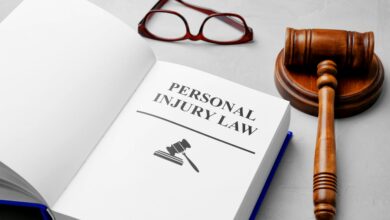Can I sue for emotional distress?

Following an act of negligence, it’s fairly common knowledge that you can sue someone for physical injuries. However, a common question related to those same circumstances is, “Can I sue somebody for emotional distress?”
Experiencing a major accident can not only lead to physical injuries but emotional suffering too. Compared to physical injuries, emotional distress can be tough to measure. However, the damages and the effect on victims are still very real. Suing for emotional distress allows a victim to recover some of these damages.
Read More: Can you sue for pain and suffering in California?
What is Emotional Distress?
Emotional distress is a kind of mental suffering or anguish caused by an incident of either negligence or through intent. The courts recognize emotional distress as a type of damage that can be recovered with a civil lawsuit. This means you can sue someone for emotional damage or distress if you can present evidence to back your claims.
Most emotional distress claims need you to have sustained physical harm as a result of the incident. That being said, recent cases have allowed for victims to recover emotional distress damages without evidence of physical harm. Depending on the case, the psychological and emotional trauma alone, resulting from cases like sexual abuse or defamation can be grounds for an emotional distress claim.
How to Sue for Emotional Distress
Suing for emotional damages involves the following steps:
- Document your distress: You must document your medical records, job records, personal journal, etc to support your case. You can also have a digital health tracker monitoring your heart rate and sleeping patterns. The better you document your distress, the easier it’ll be to recover damages.
- Speak with a lawyer: Go over the case with your attorney. Your attorney will go over your documents and help you prepare for legal action.
- File a claim: With the help of your lawyer, you’ll file an emotional distress claim against the defendant.
- Pre-trial preparations: Once the defendant is served, the discovery process where the exchange of information between both parties will take place. The two parties can work out a settlement offer to avoid trial. Your attorney will advise whether you should accept the settlement offer.
- Trial & Settlement: The courts will listen to arguments and evidence for both sides and decide accordingly.
Suing somebody for emotional distress can be a long and difficult journey. Equip yourself with how the system works and speak with an attorney to give yourself the best chances of recovering your damages.
Read More: How Do Attorneys Calculate “Pain and Suffering” For Car Accidents?
Evidence of Emotional Distress
Evidence is a key factor in understanding whether you can sue someone for emotional distress. If you are intending to sue for stress or other mental anguish, you need to prove you really sustained emotional distress. Below are examples of evidence that you could use in your case:
- Physical injuries: Physical injuries caused by the incident can be relatively easy to determine.
- Time: The longer you’ve been experiencing distress, the more legitimate your claim is.
- Medical records: A report from your doctor or psychologist is a major factor in showing emotional distress. This is why it’s crucial to get medical attention immediately after the incident.
- The severity of the initial incident: The more severe and upsetting the original incident is, the more likely the courts will rule for emotional distress.
- Testimonies: The courts will factor in testimonies of how the incident impacted your life. Family, friends, medical professionals, or colleagues can all testify on your behalf.
As you can see, suing for emotional distress is possible, but it requires navigating a complicated legal system. That’s why it’s imperative you speak with a personal injury attorney so they can determine the strength of your claim and provide you with the most suitable options. Contact us at Dunk Law Firm to see how we can assist you with your case.











